Best summer-flowering shrubs: 16 beautiful varieties to grow
Fall in love with these gorgeous summer-flowering shrubs and enjoy months of scent and color in your plot
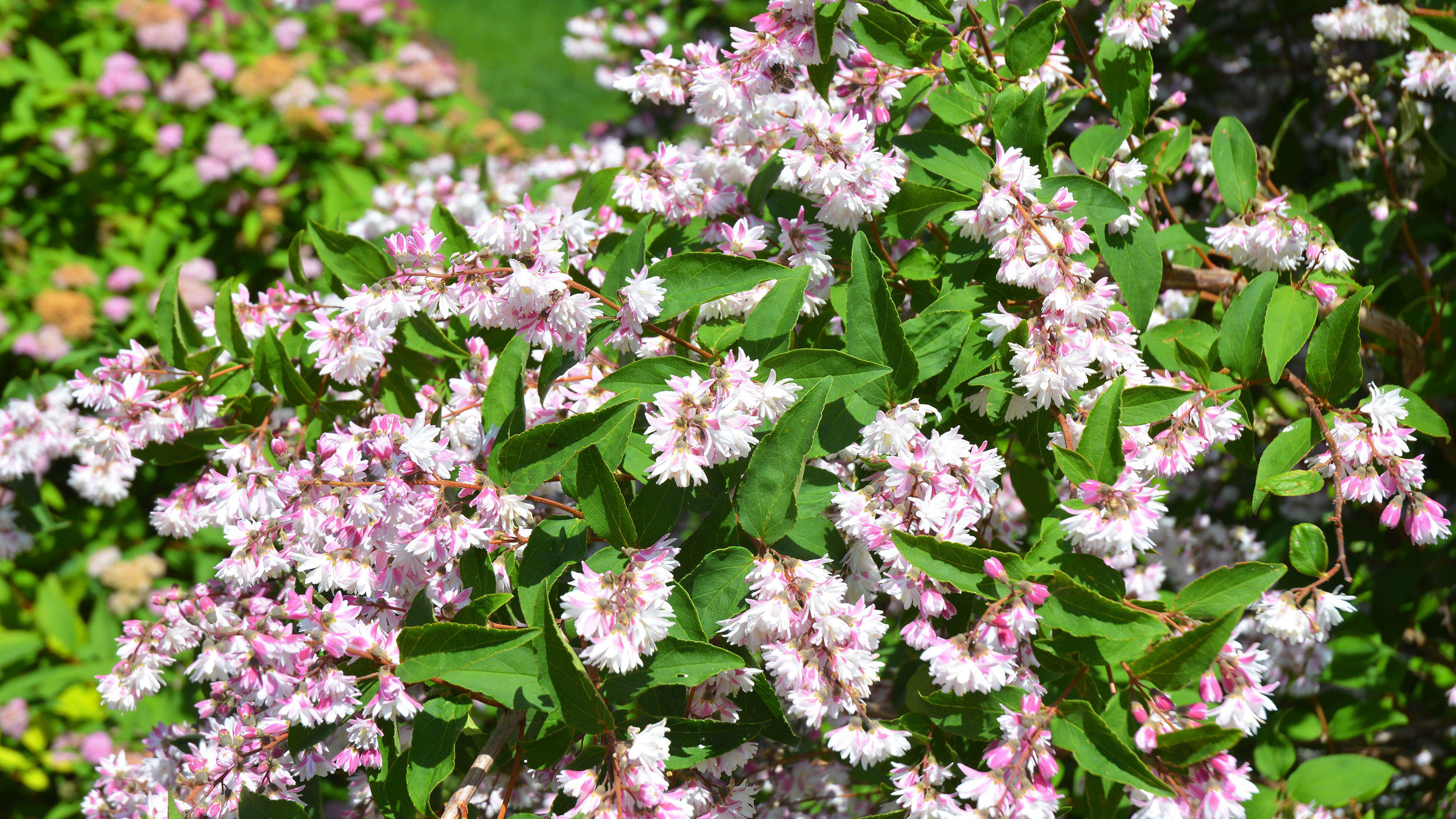

There are many characterful summer-flowering shrubs of all shapes and sizes ready to improve the outline and performance of your garden.
Smaller and bushier than trees, shrubs have a permanent structure of woody stems and form the mainstay of most gardens. Whether deciduous or evergreen their twiggy structures add height and dimensions, shade out weeds and enclose gardens to make them feel secluded.
Landscaping with shrubs has other benefits too. Their leafy stems and nectar-rich flowers are great for wildlife, providing roosting and nesting sites for birds and attracting pollinating insects.
Don’t be scared to plant large summer-flowering shrubs either, as by pruning out a few lower branches they make useful alternatives to small trees with space for planting underneath.
At the other end of the scale, plant breeders have been busy producing low, compact versions of familiar favorites, for example pink-flowered Deutzia x rosea Yuki Cherry Blossom at only 2ft (60cm) and a good range of dwarf buddlejas.
Top of my own list of summer-flowering shrubs is Dipelta floribunda, which looks rather like a large, dainty weigela, and I’m pleased to have young plants rooted from cuttings taken from a friend’s plant.
Brighten up borders with summer-flowering shrubs
Try some of these summer-flowering shrubs as part of mixed garden borders along with herbaceous perennials and bulbs to create low-maintenance structure and color throughout the warmer months.
1. Abelia x grandiflora Sunny Charms
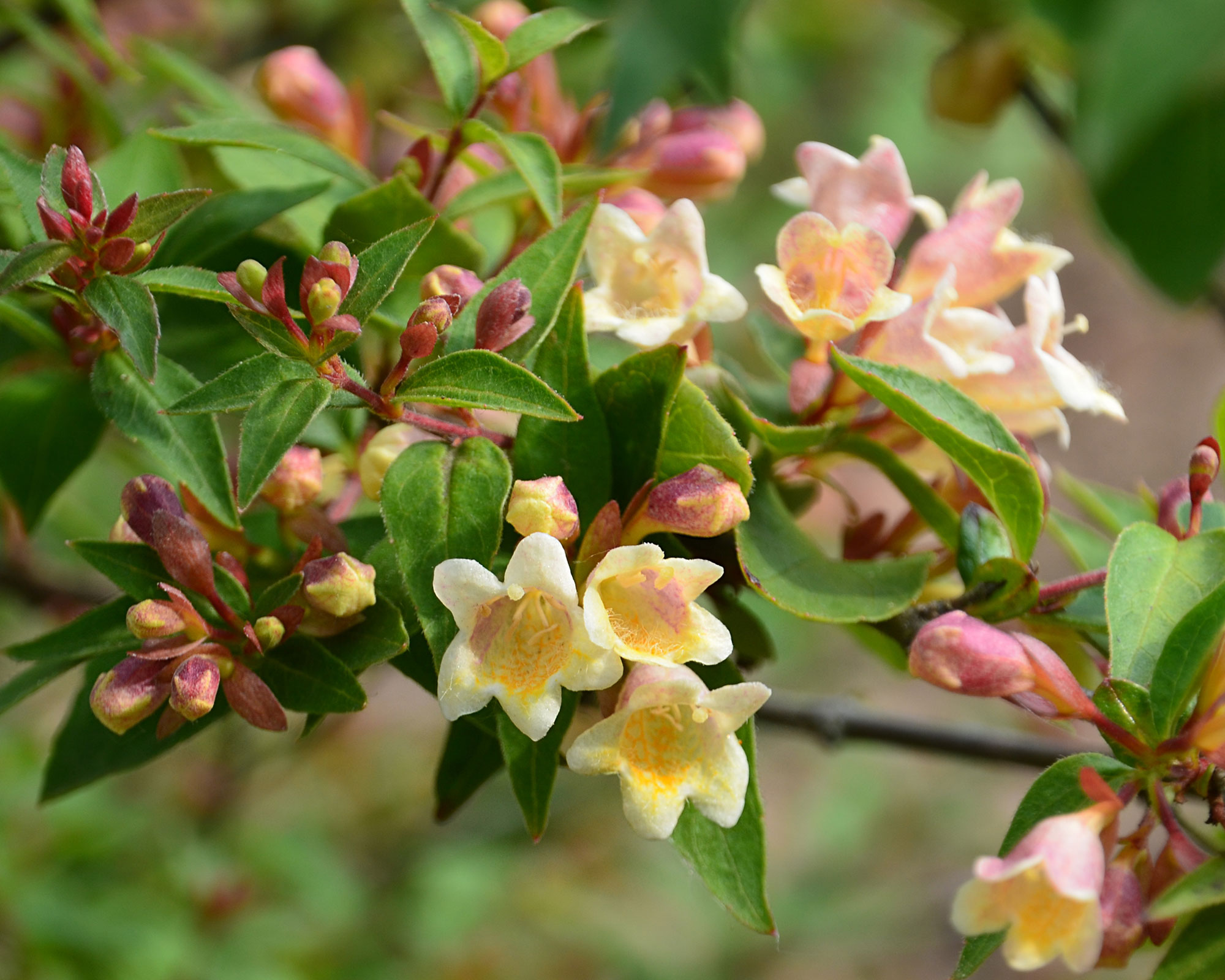
- Hardiness: USDA 8b/9a
- Height: 4ft (1.2m)
- Spread: 3ft (1m)
This relatively new abelia is rounded in shape, with arching branches bearing spicily-scented pink and yellow blooms against neat evergreen or semi-evergreen foliage over a long period from mid summer into fall.
Even after the flowers have faded, reddish purple sepals persist. For best results, choose a sheltered, sunny position of well-drained but good, moist soil or grow in a container.
2. Buddleja x weyeriana ‘Sungold’ AGM
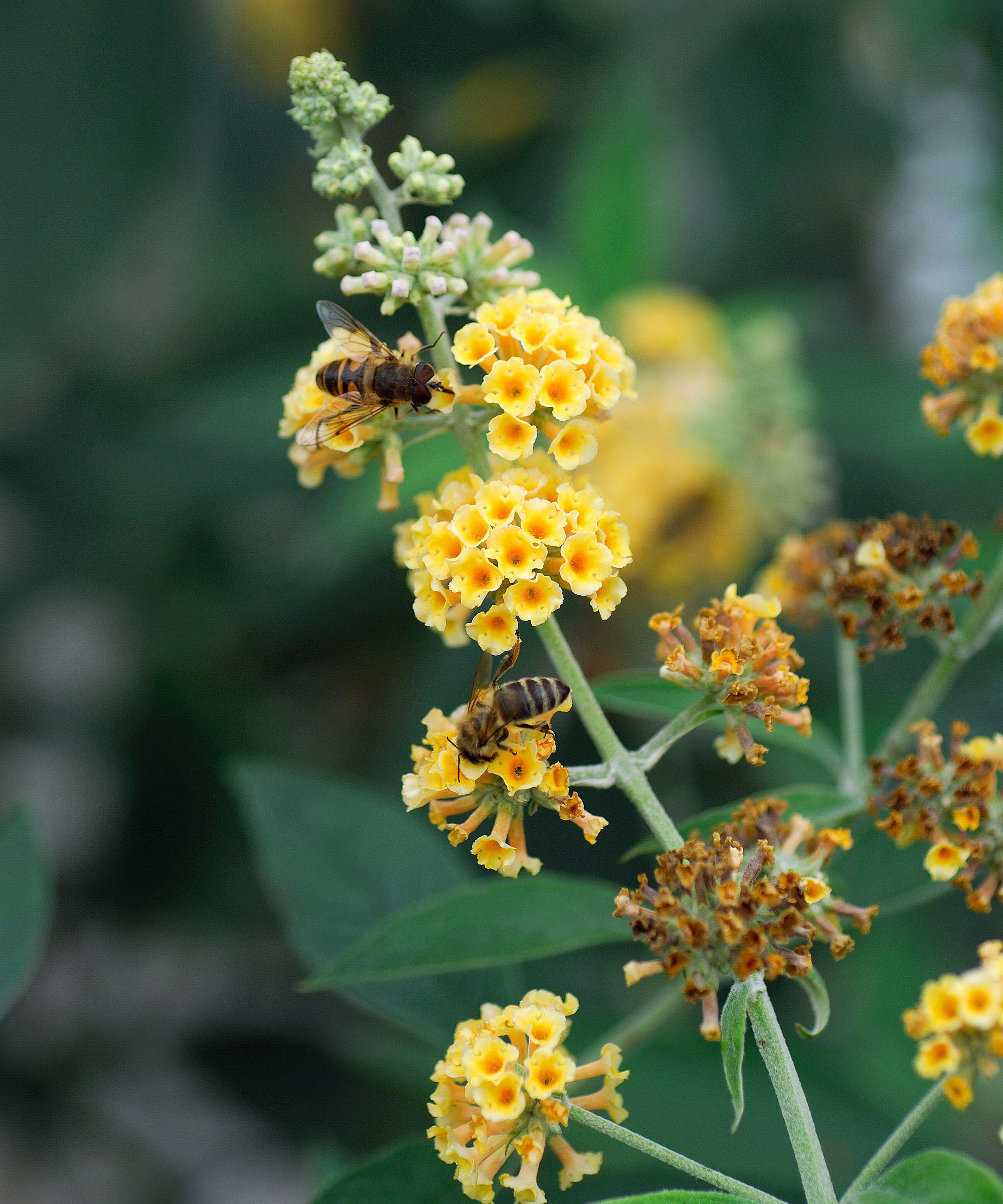
- Hardiness: USDA 6b/7a
- Height: 10ft (3m)
- Spread: 10ft (3m)
Buddleja is one of the best fast-growing shrub for your garden, but if you can’t choose between a cultivar of butterfly bush (B.davidii) or orange-flowered B.globosa whose blooms are held in balls, B.x weyeriana is a hybrid between the two.
Expect a tall, sun-loving deciduous shrub opening clusters of sweetly scented golden yellow flowers from summer to autumn. Pruning buddleja hard in early spring will maintain structure and improve flowering.
3. Ceanothus ‘Burkwoodii’ AGM
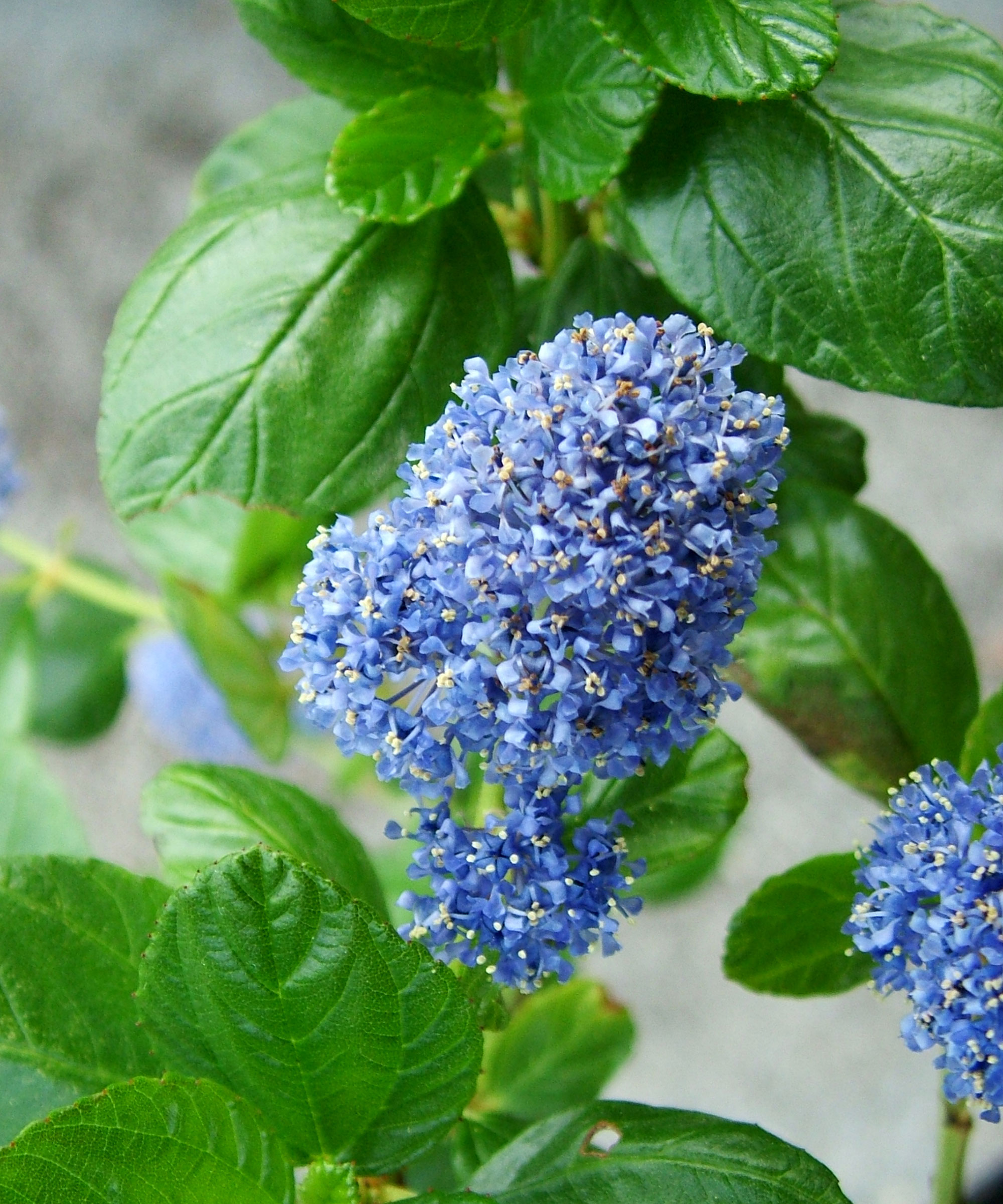
- Hardiness: USDA 8b/9a
- Height: 6ft (1.8m)
- Spread: 6ft (1.8m)
Although many Californian lilacs open their showy blue flowers in spring, this compact evergreen waits until late summer and early fall before revealing clusters of fuzzy, rich blue flowers against shiny foliage.
It's a fantastic plant for pollinators as the flowers are much-loved by bees, so much so that the whole plant is often a-buzz with them.
It prefers a sunny spot with well-drained soil and a sheltered position, perhaps by a garden wall will suit.
4. Clerodendrum trichotomum var.fargesii AGM
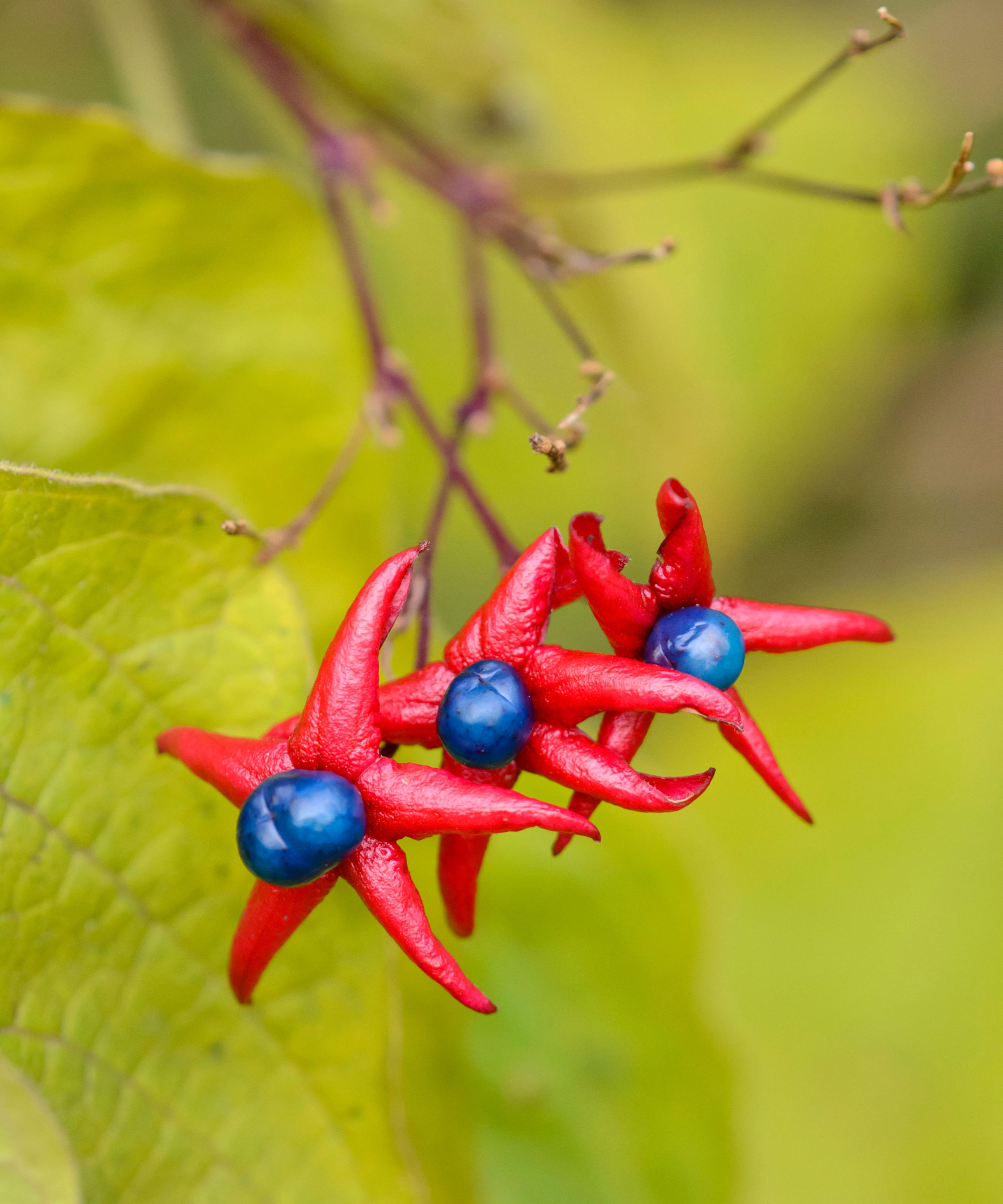
- Hardiness: USDA 6
- Height: 15ft (5m)
- Spread: 15ft (5m)
Easily trained to make a tree-like shape, this large deciduous sun-loving Chinese shrub has much to give.
In late summer to fall panicles of fragrant white flowers emerge from pink-tinged calyces that turn into fleshy crimson stars each with a turquoise berry at its centre.
These plants are not particularly fussy, but they will typically prefer a humus-rich soil in sun or light shade.
5. Deutzia scabra ‘Codsall Pink’ AGM
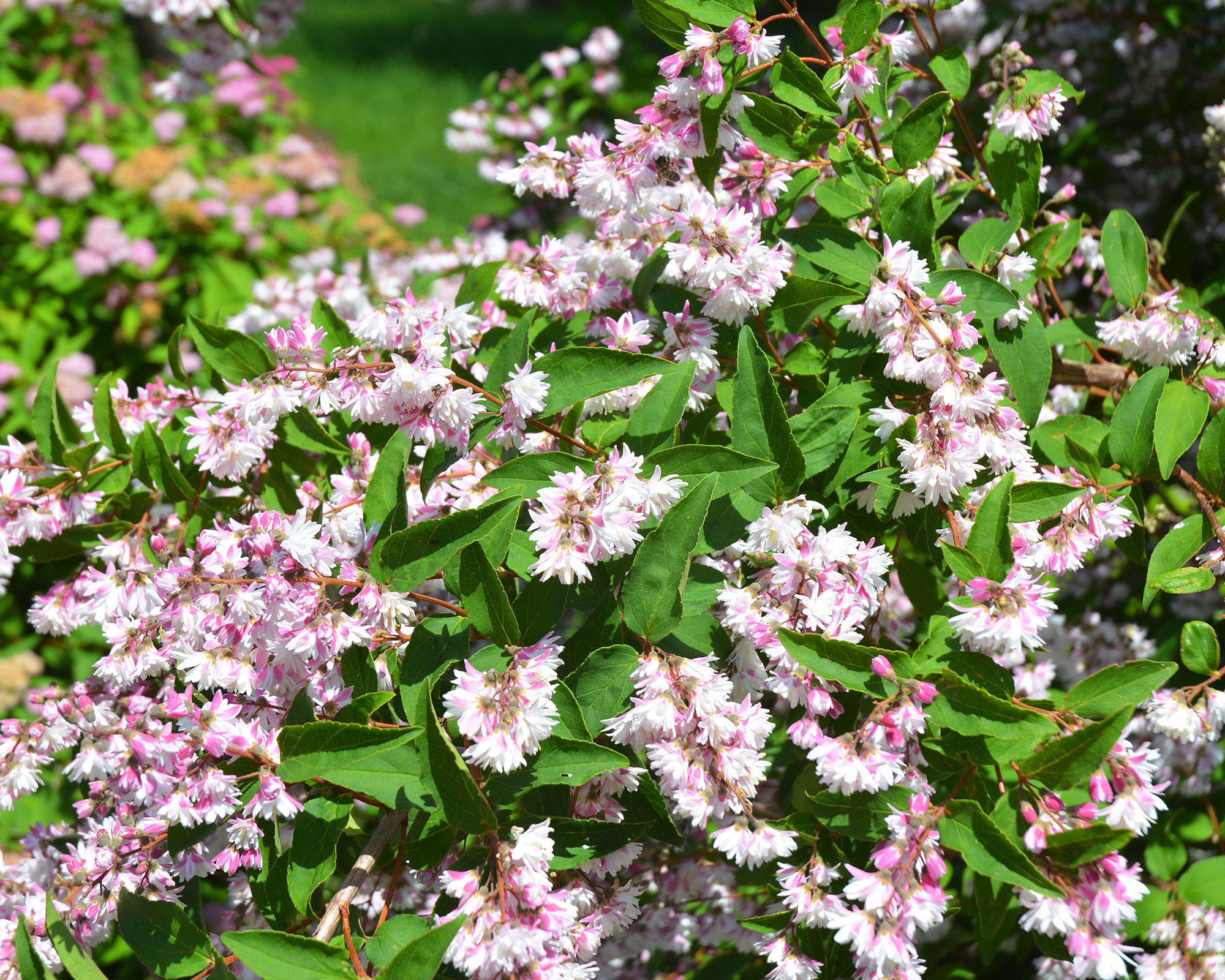
- Hardiness: USDA 7b/8a
- Height: 10ft (3m)
- Spread: 6ft (1.8m)
This tall, upright deciduous shrub is a festive sight in early to mid summer when large clusters of honey-scented double white flowers open, flushed delicately with pink on the backs of outer petals.
Grow in sun or partial shade in good, well-drained soil types and cut down some older, taller stems immediately after flowering.
6. Heptacodium mikonioides AGM
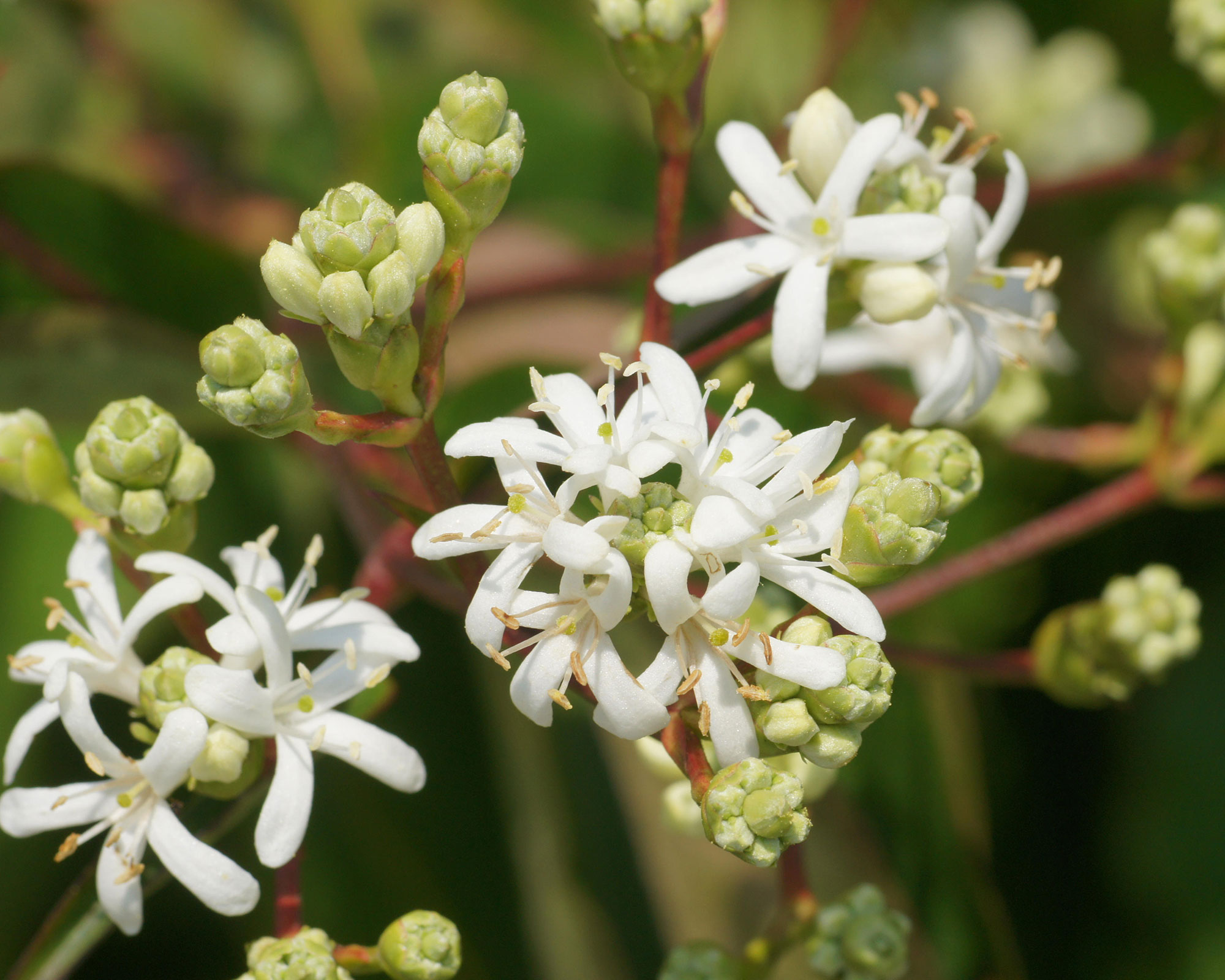
- Hardiness: USDA 6a-1
- Height: 12ft (4m)
- Spread: 8ft (2.5m)
The seven son flower of Zhejiang is a relatively new introduction but well worth considering growing as a tree for small gardens.
It has handsome foliage, small but fragrant white flowers from late summer into fall, shrimp-colored sepals and attractive bark.
These summer-flowering shrubs respond well to pruning and thrive in well-drained soil in sun or light shade.
7. Hypericum ‘Hidcote’ AGM
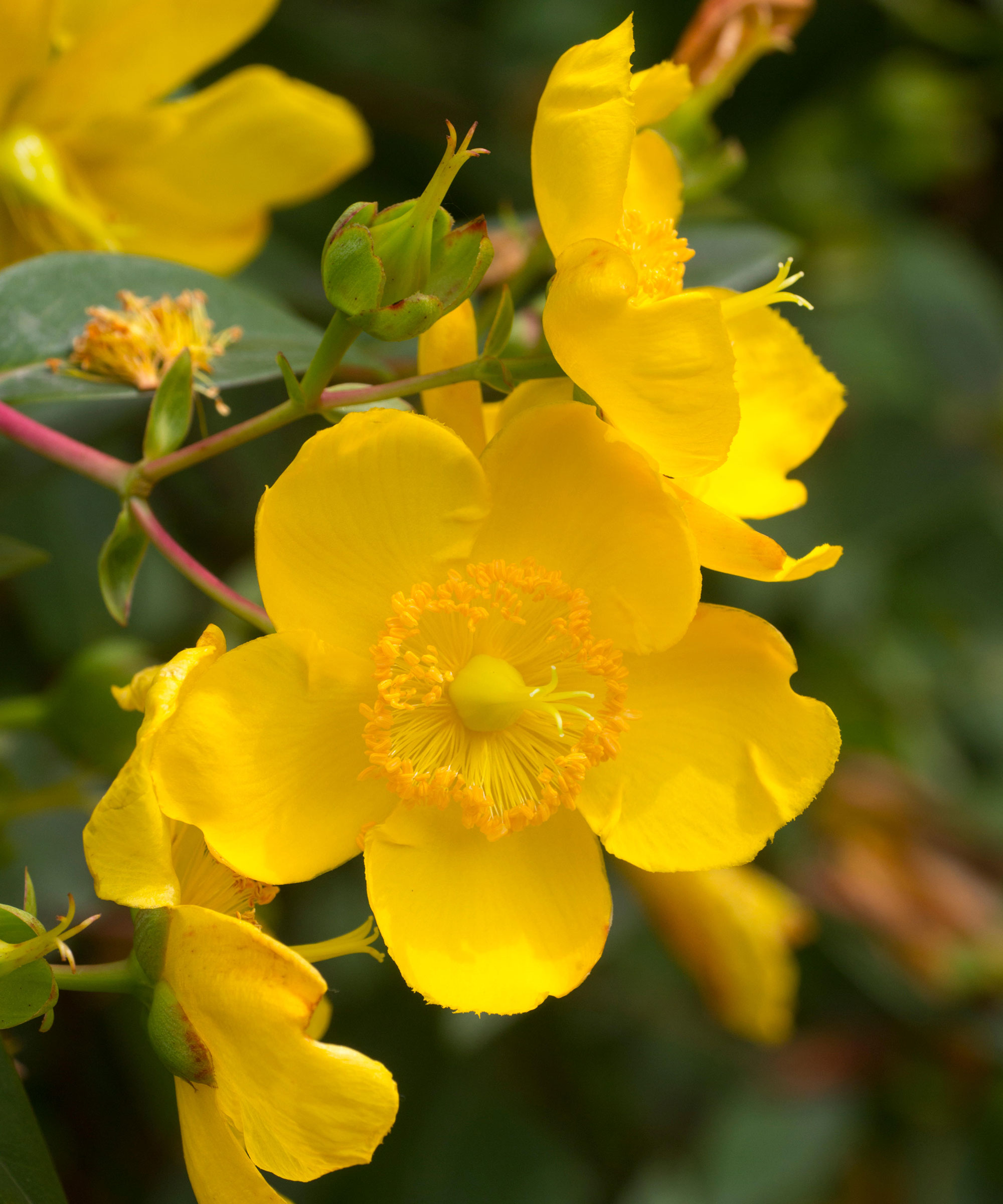
- Hardiness: USDA 7b/8a
- Height: 4ft (1.2m)
- Spread: 4ft (1.2m)
Easy and cheerful, this evergreen or semi-evergreen St John’s wort is due a revival.
Bright yellow flowers over 2in (5cm) across brighten borders from mid summer to autumn and are worth inspection, to enjoy the showy boss of stamens.
This must be one of the best low-maintenance shrubs, thriving in a wide range of soils in sun or light shade.
8. Lupinus arboreus AGM
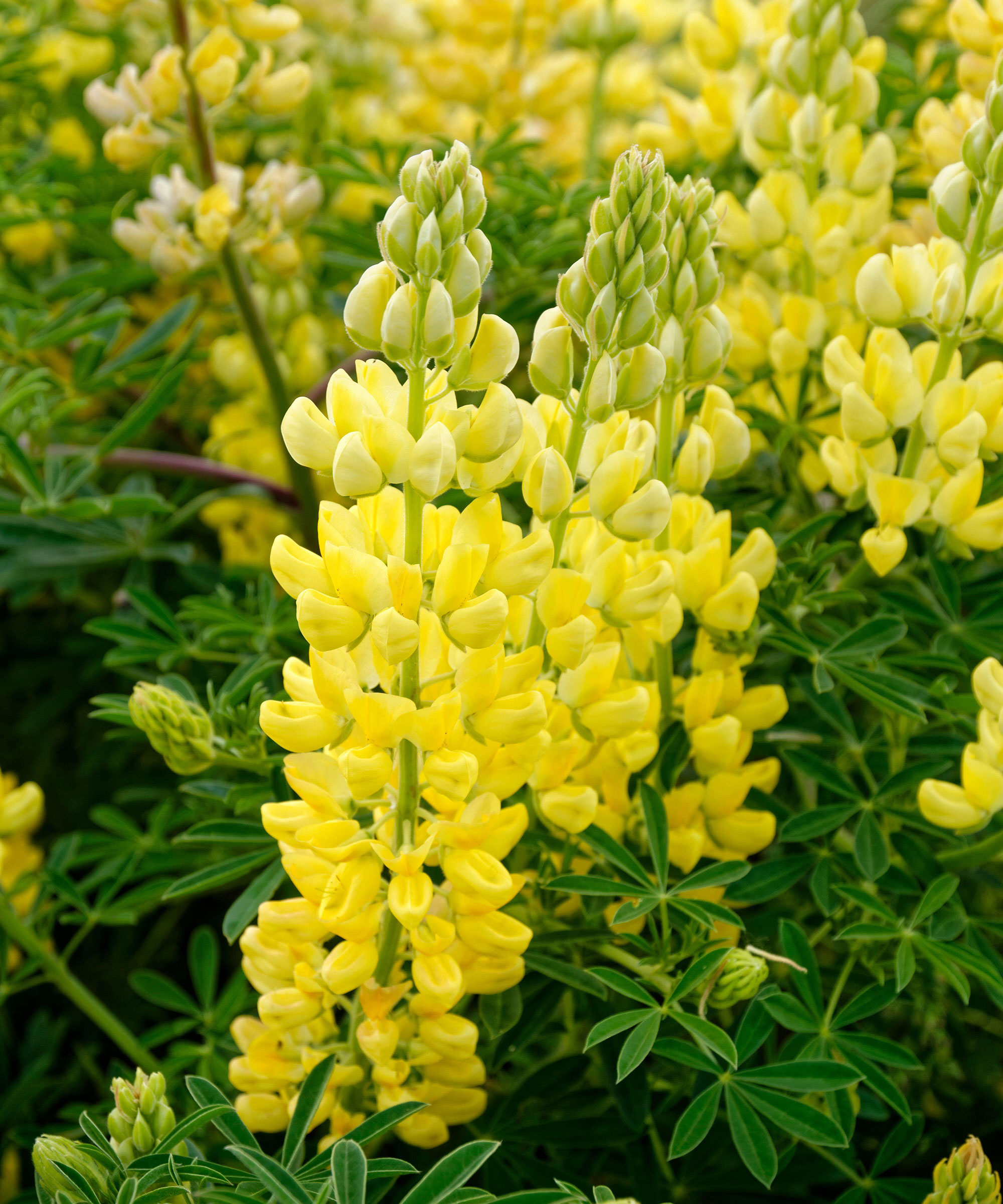
- Hardiness: USDA 8b/9a
- Height: 6ft (1.8m)
- Spread: 6ft (1.8m)
The evergreen Californian tree lupin grows rapidly into a rounded bush, producing yellow flower spikes smaller than herbaceous lupins but still up to 12in (30cm) long.
Like most lupins, these are fragrant and at their best in early to mid summer. Plants must have sun and well-drained soil and are relatively short lived, though easily propagated by seed or cuttings.
9. Spartium junceum AGM
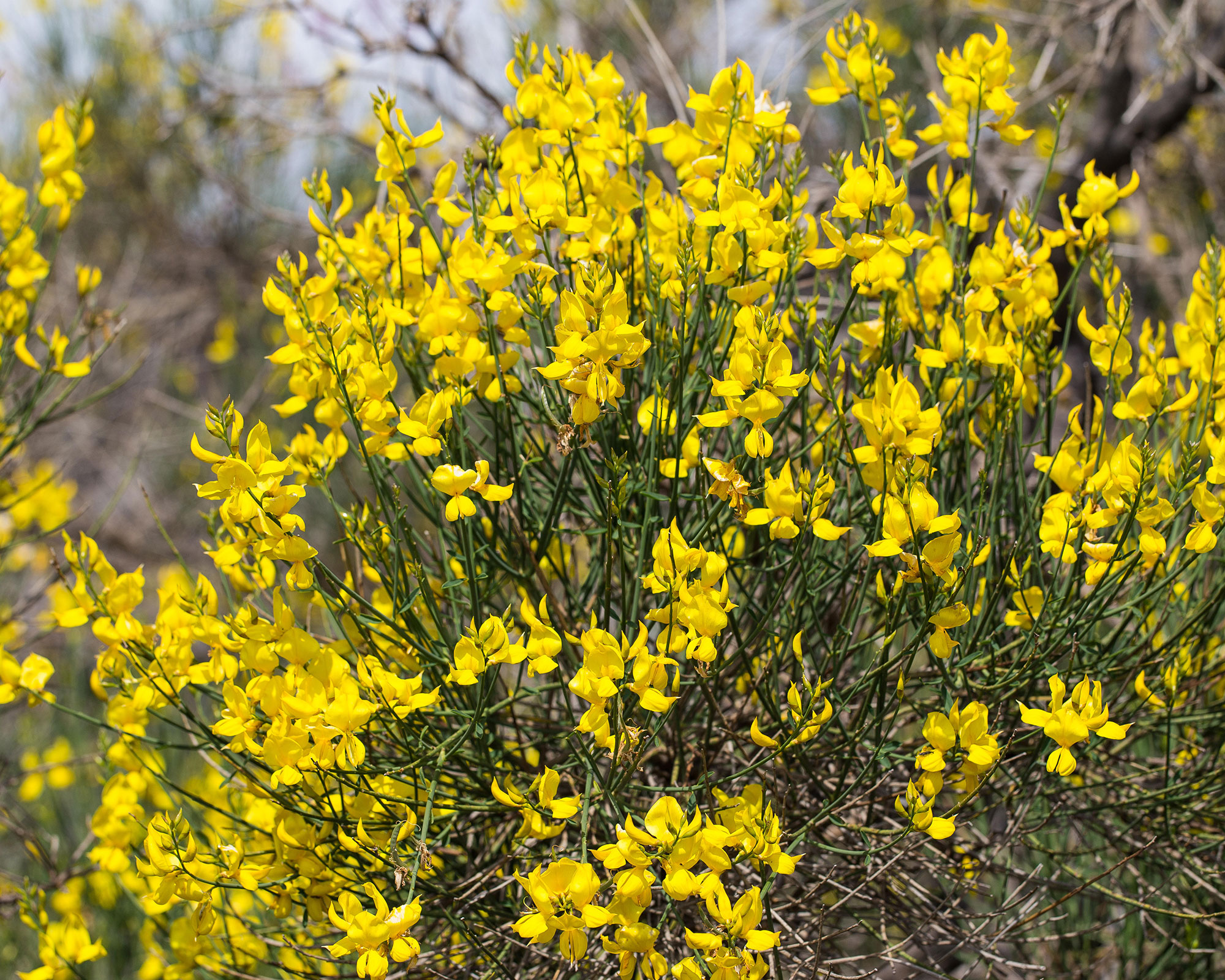
- Hardiness: USDA 7b/8a
- Height: 8ft (2.5m)
- Spread: 6ft (1.8m)
Spanish broom is a magnificent specimen for Mediterranean gardens where it can revel in sunshine and well-drained soil.
It's a good drought tolerant plant, bears few deciduous leaves and instead, a mass of green stems. These are garlanded from mid to late summer by many yellow, fragrant, pea-like flowers. Prune in spring to improve shape.
10. Buddleja davidii Butterfly Candy Series Little Lila
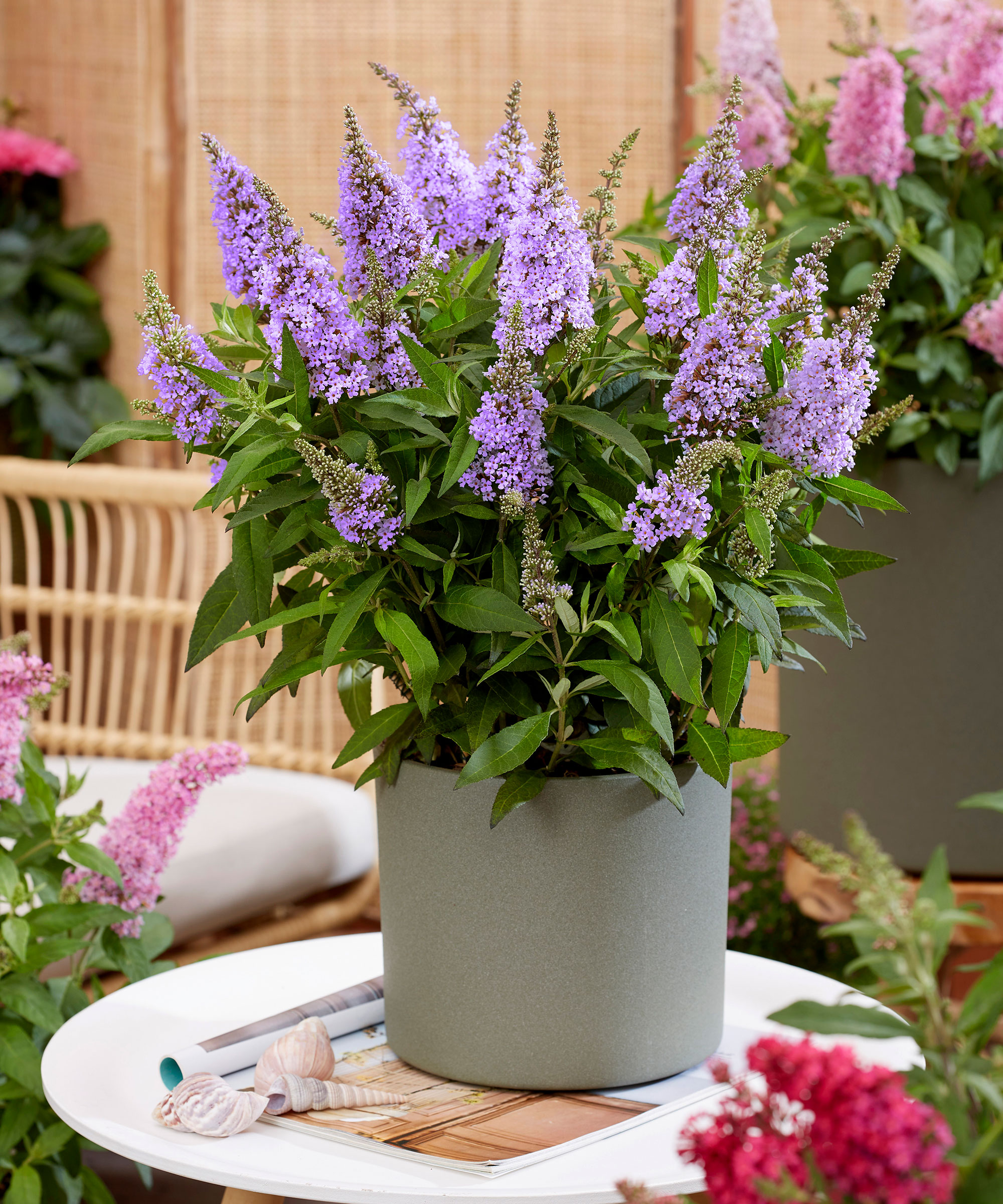
- Hardiness: USDA 6b/7a
- Height: 31in (80cm)
- Spread: 31in (80cm)
Little Lila delivers the familiar tapering panicles of fragrant lilac-purple flowers usually associated with buddlejas but on a miniature plant easily accommodated in a container or courtyard garden and just as irresistible to butterflies.
Mix a peat-free compost 50:50 with John Innes no 2 plus 20 per cent grit for good drainage and position in a sunny spot.
11. Caryopteris x clandonensis ‘Summer Sorbet’ AGM
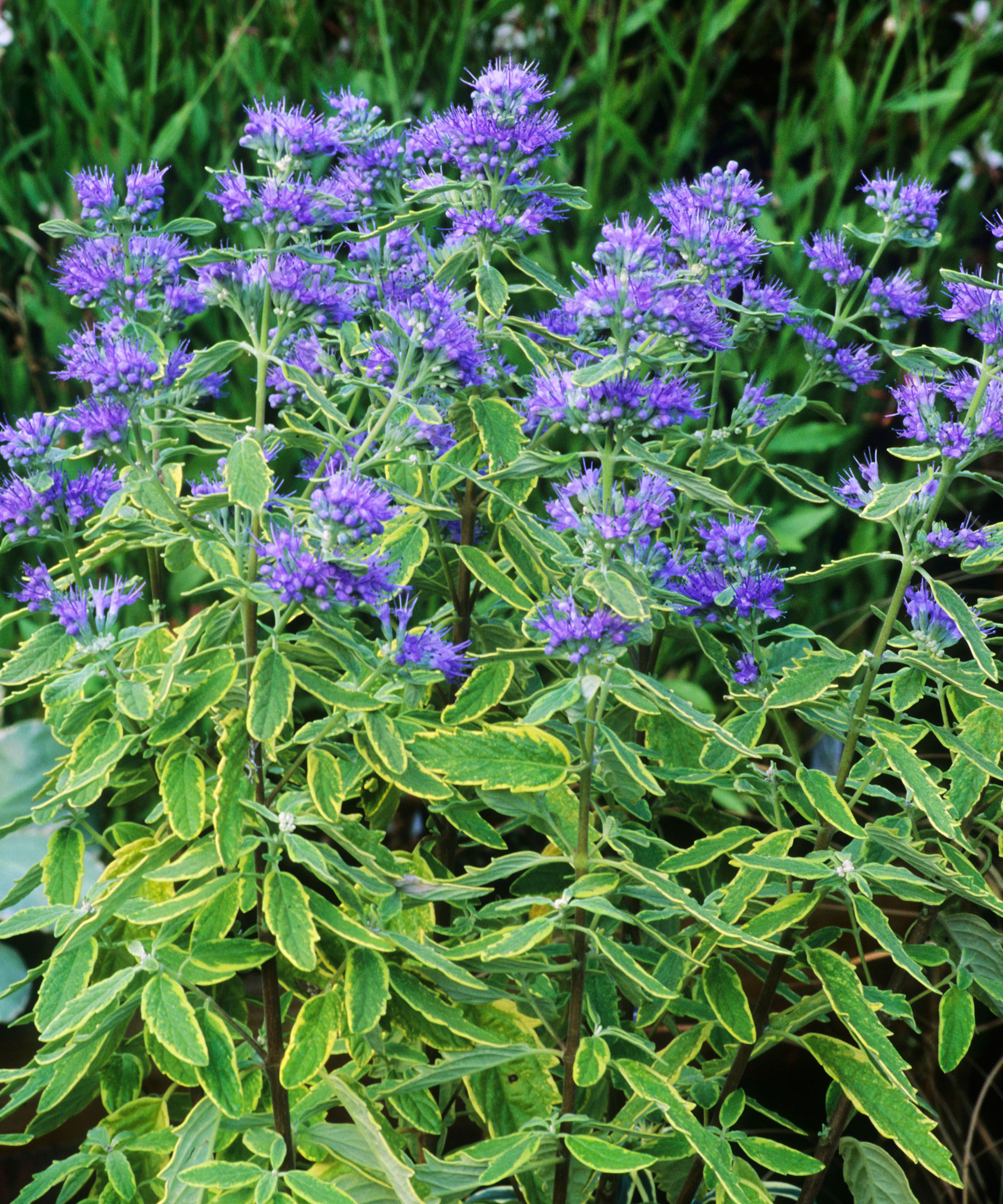
- Hardiness: USDA 8b/9a
- Height: 3ft (1m)
- Spread: 3ft (1m)
Although the usual plain-leaved versions of deciduous Caryopteris x clandonensis make handsome low shrubs flowering in late summer and autumn, this variegated cultivar will stand out in your container gardening ideas.
Gold-edged leaves contrast well with pale blue flowers and plants remain compact after being pruned hard back in early spring. Make sure compost is well-drained and stand the container in sun.
12. Deutzia x rosea Yuki Cherry Blossom

- Hardiness: USDA 7b/8a
- Height: 2ft (60cm)
- Spread: 2ft (60cm)
This compact, deciduous rose deutzia is one of the best shrubs for small gardens. It makes a delightful show of single soft pink blooms against fresh green foliage in late spring and early summer. Later, there is a further display of purple and bronze fall tints.
Grow in sun or partial shade and avoid frost pockets as foliage can be damaged by late spring frosts.
13. Clethra alnifolia ‘Hummingbird’ AGM
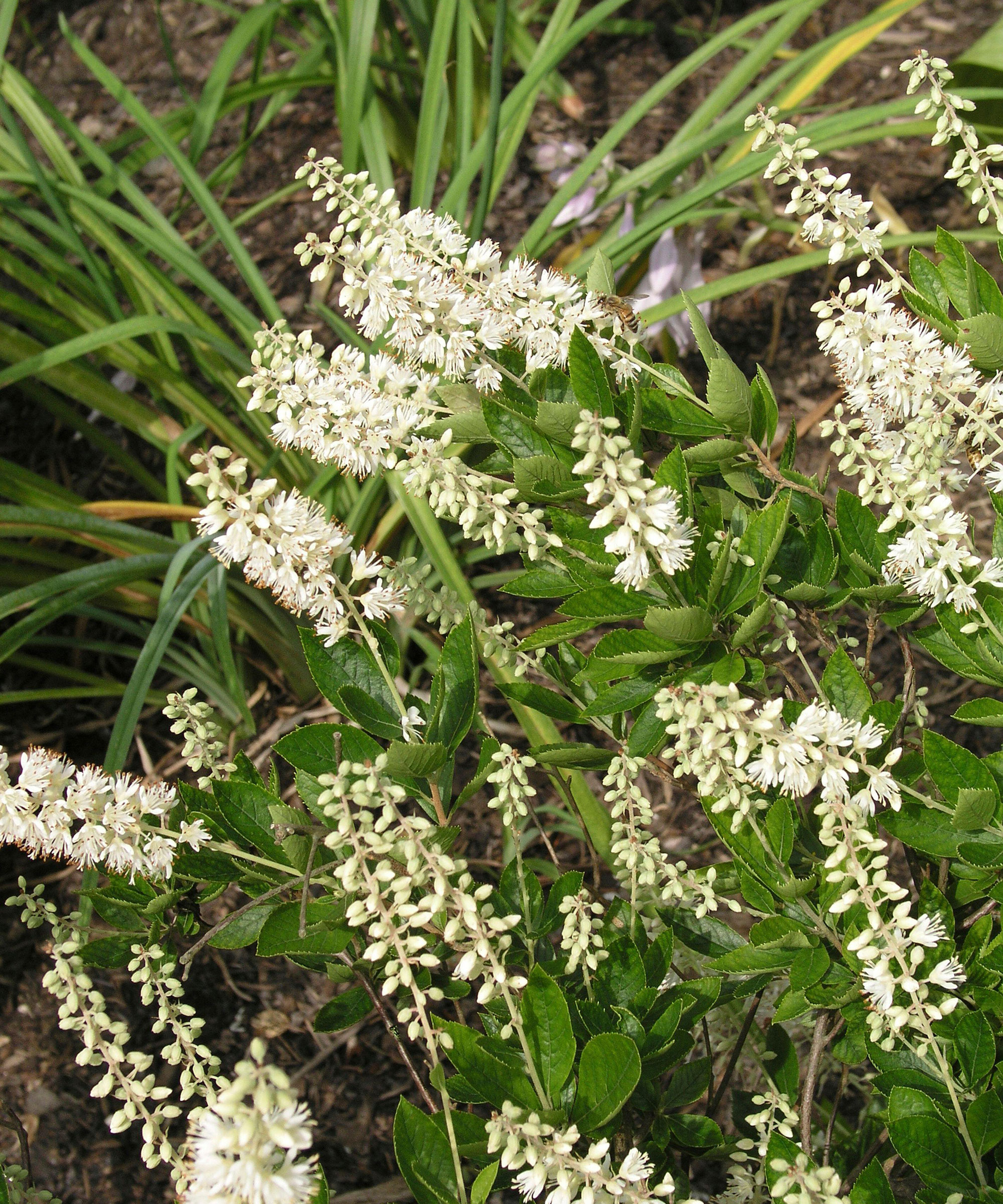
- Hardiness: USDA 7b/8a
- Height: 4ft (1.2m)
- Spread: 4ft (1.2m)
Known as white alder, summersweet or sweet pepper bush, this deciduous shrub flowers in mid to late summer and shows yellow fall tints.
As the common names suggest, the 6in (15cm) long candles of long-lasting white flowers are richly clove scented and attract many bees and butterflies.
Grow in sun or partial shade and acidic, humus-rich soil or a pot of ericaceous compost.
14. Dipelta floribunda AGM
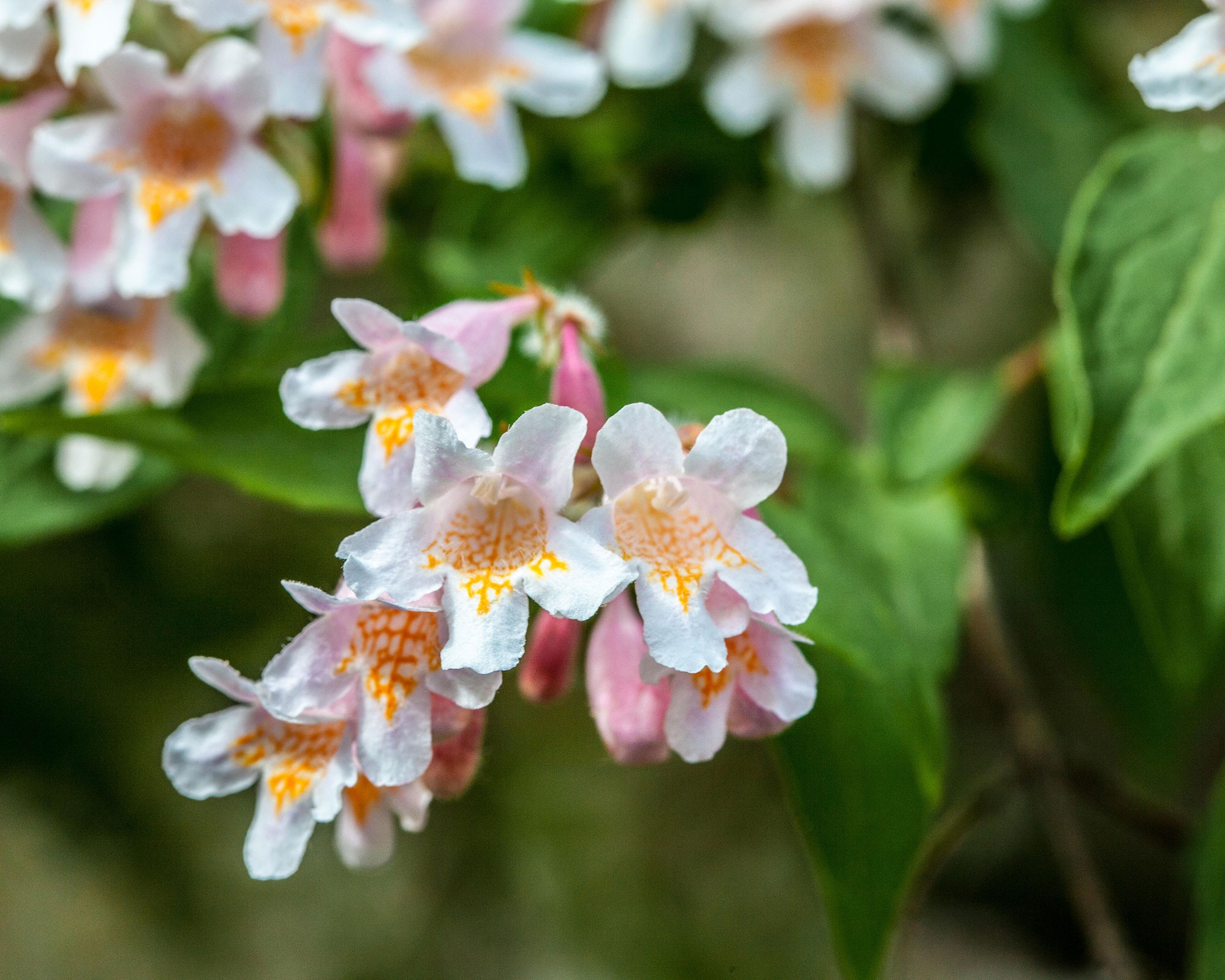
- Hardiness: USDA 7b/8a
- Height: 10ft (3m)
- Spread: 10ft (3m)
If you're searching for more unusual summer-flowering shrubs, this is one to consider. Well-grown specimens of these large Chinese deciduous shrubs are a sight to behold, blooming in early summer.
The shapely and fragrant pale pink flowers have yellow throats and are daintier than those of weigela. Hardy and unfussy, this likes an open sunny position.
Immediately after flowering, cut flowered stems as far back as non-flowering ones.
15. Fabiana imbricata f.violacea AGM
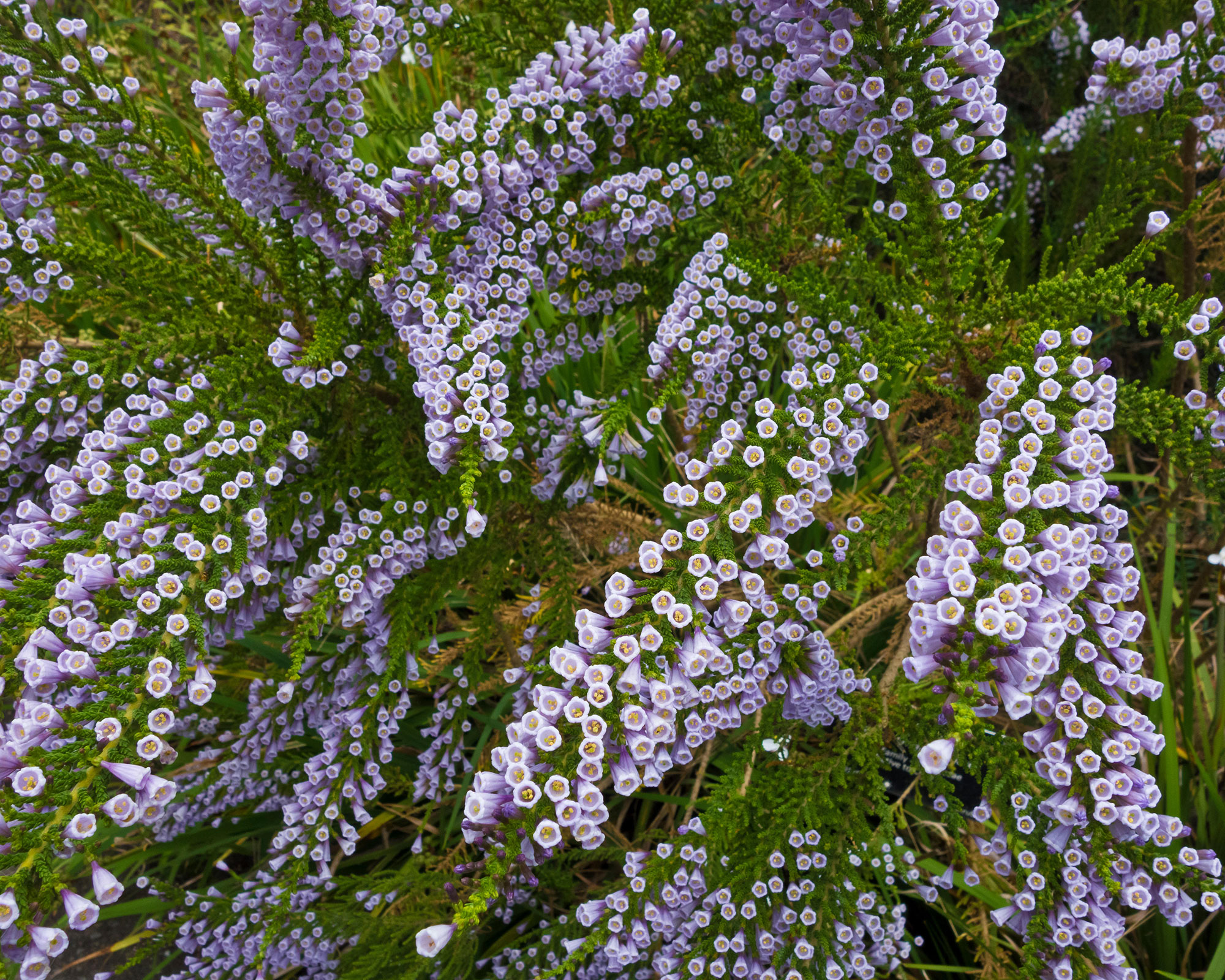
- Hardiness: USDA 8b/9a
- Height: 5ft (1.5m)
- Spread: 3ft (1m
The Chilean violet false heath resembles a giant heather with large tubular flowers whose white or in this case pale lavender hue shows well against the foxtails of bright green needle-like leaves. These appear in early summer.
Provide a sheltered, sunny location and well-drained soil. A neutral to acidic pH is preferred, as leaves turn pale on chalky soils.
16. Indigofera heterantha AGM
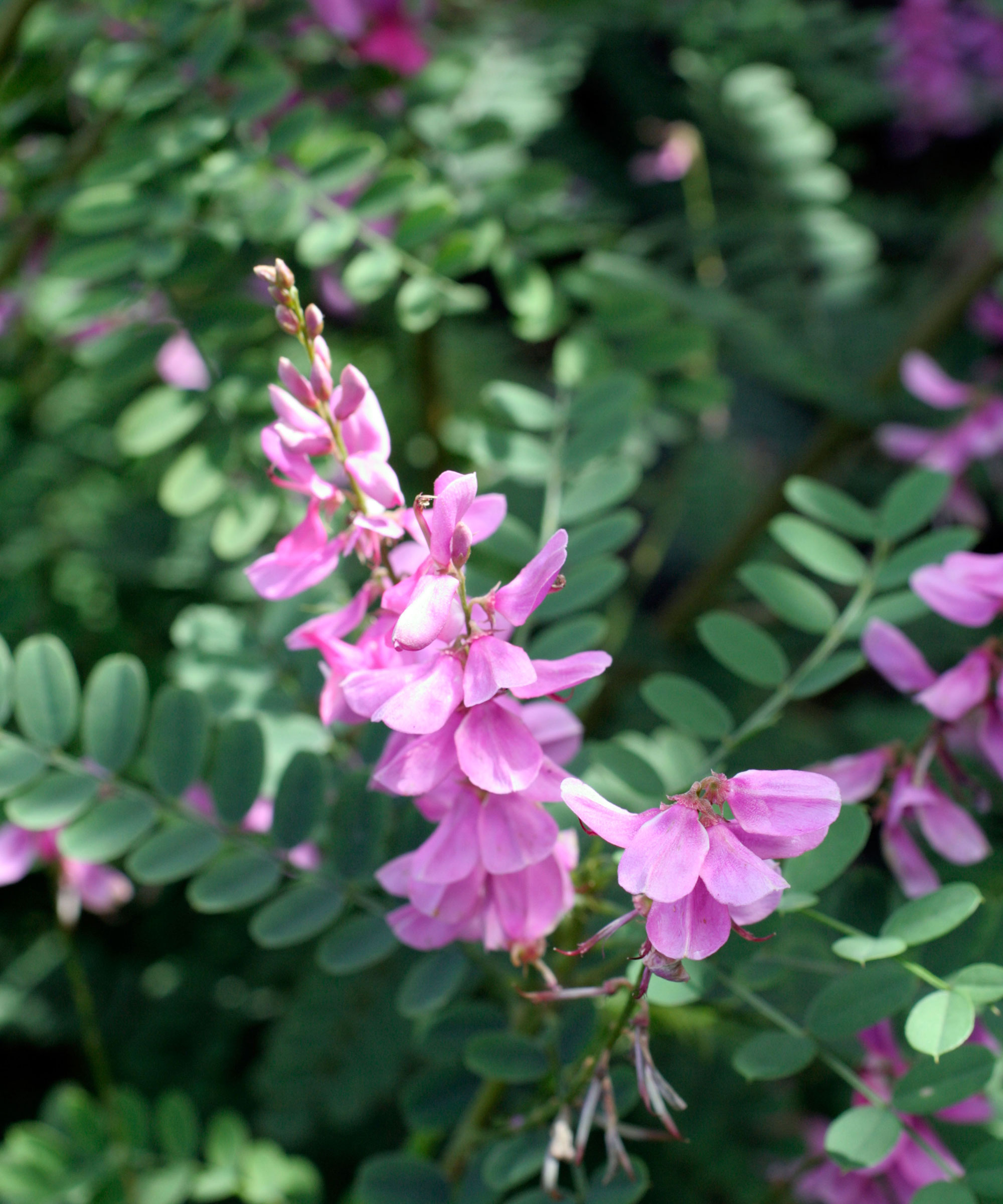
- Hardiness: USDA 7b/8a
- Height: 4ft (1.2m)
- Spread: 4ft (1.2m)
Himalayan indigo is a deciduous shrub but I have to admit it dies back like an herbaceous perennial when winters are particularly cold.
Cut out any damaged growth in mid spring and plants soon regenerate, producing stems of pinnate foliage joined from mid summer to fall by clusters of rosy-purple pea-like flowers. Plant in sun and well-drained soil.
What's the best summer-flowering shrub?
Choosing from many lovely plants is a challenge, so I asked renowned plantsman Roy Lancaster to nominate one of his favorite summer-flowering shrubs.
'It has to be Philadelphus ‘Belle Etoile’ which I wouldn’t be without,' he says. 'I value it for its hardiness, growing in almost any soil and for its reliability in flowering. I adore the all-pervading fragrance of its white flowers with their central maroon flush, it is a favourite with bees and other insects and readily available.
'I shall not easily forget a sunny summer day during the lockdown in 2020 when I was sitting in our garden with a glass of wine listening to a thrush singing in a nearby tree. I closed my eyes the better to enjoy the moment and was then immediately enveloped in ‘Belle Etoile’s' scent.'
Roy’s advice for this bee-friendly plant is to prune the flowering shoots back hard when the flowers fade to encourage the development of strong new growths to bloom the next year.
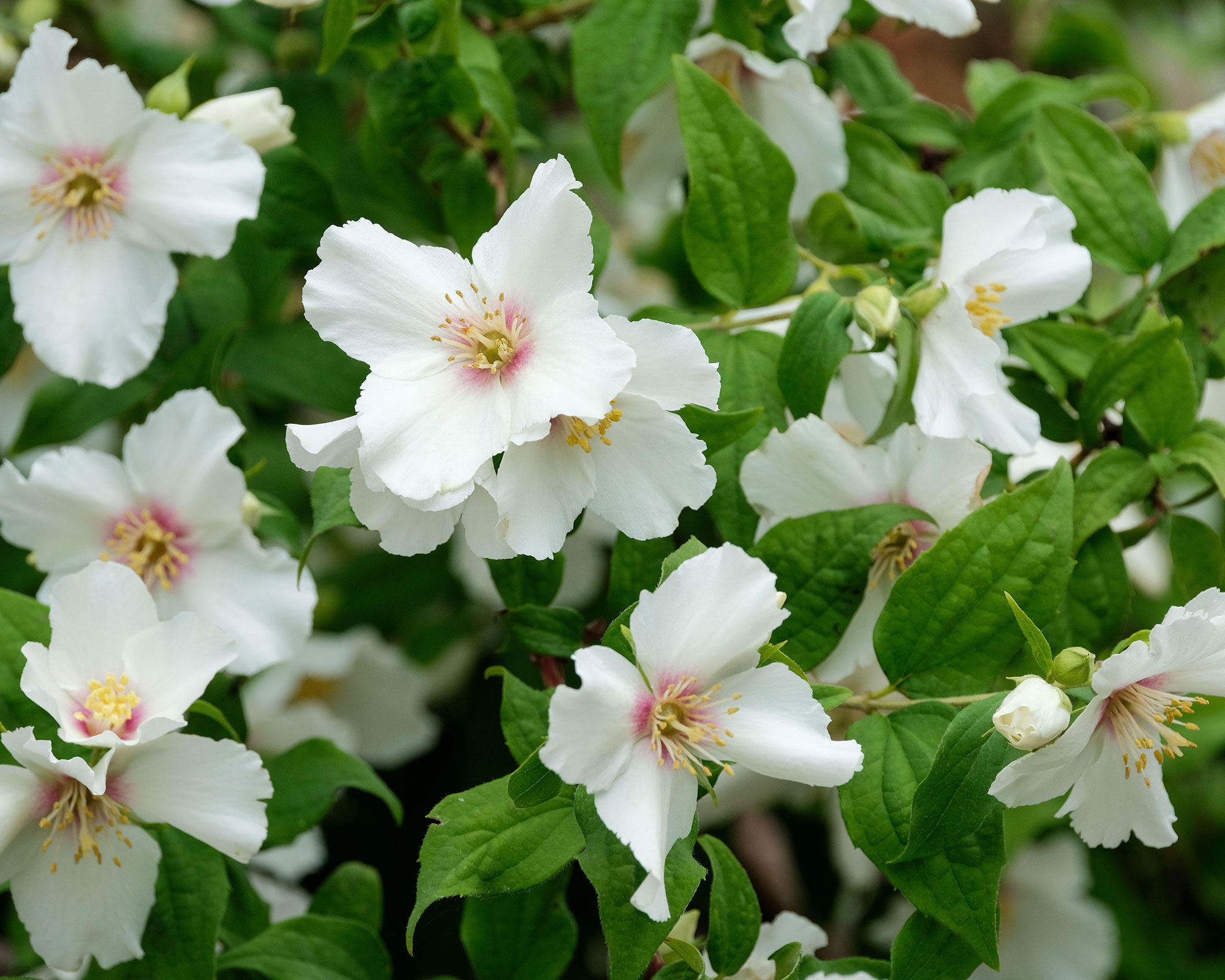
Do I need to water my summer-flowering shrubs?
All shrubs, but especially those planted from pots in spring or summer, will require watering during dry spells for the first two years while establishing.
When watering plants, apply water to the roots and if possible, place a mulch of soil conditioner over moist soil but not up around stems.
A thorough watering every few days beats daily sprinkles and is best applied in the evening or the morning.
Matching the right plant to the right place is important though. Mediterranean-type plants are usually more tolerant of harsh sun and drought, whereas woodland plants thrive best in humus-rich soils and partial shade.
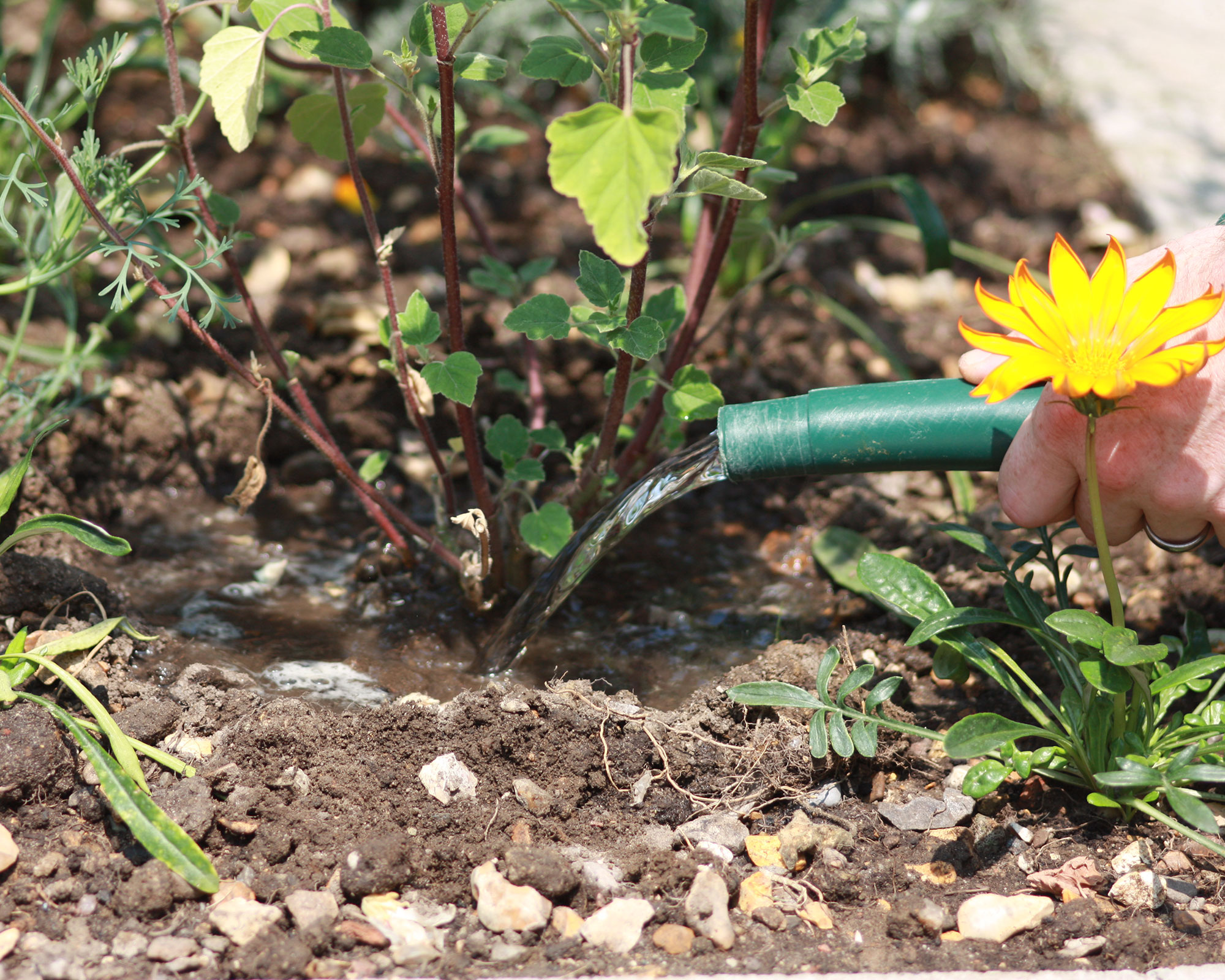
When do I prune summer-flowering shrubs?
When it comes to pruning shrubs, each type of summer-flowering shrub will have its own pruning requirements, from virtually no pruning (most evergreen ceanothus, hypericum and fabiana) to regular annual cuts.
In general, however, shrubs that bloom in early summer are pruned immediately after their flowers have faded. Aim to remove flowered stems back to non-flowering ones and cut out older stems growing too tall or in the wrong direction. The pruned shrub should retain a natural outline.
Late-summer flowerers like buddleja and caryopteris are cut hard back in early to mid spring and bloom on stems made the same season.
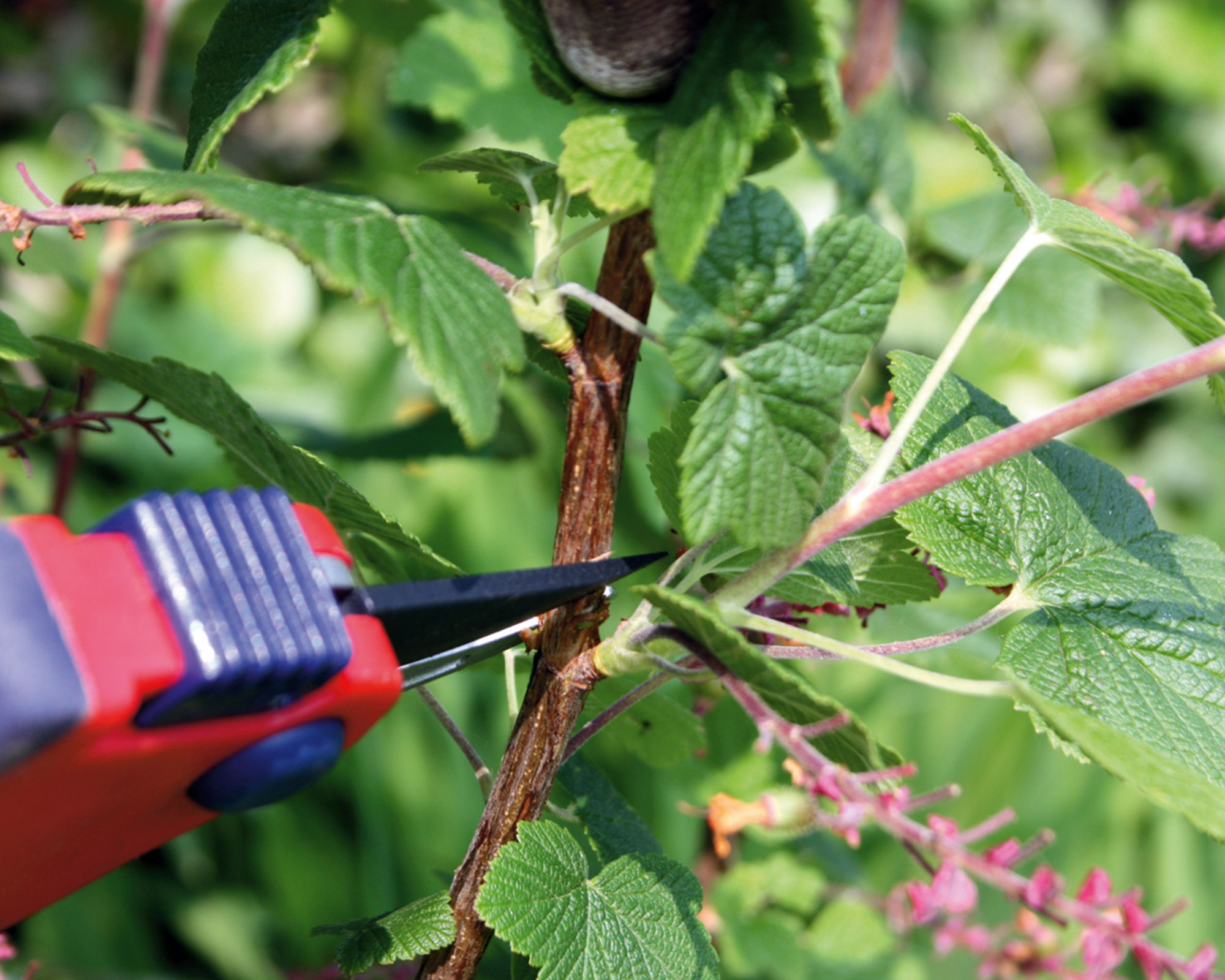
Why won’t my summer shrubs flower?
If summer-flowering shrubs fail to bloom, it can usually be laid at the door of pruning at the wrong time. If shrubs that bloom in early summer are pruned in spring, this cuts away the stems carrying their flower buds. The worst examples of pruning are where shrubs are regularly trimmed like small hedges.
Bad health caused by winter waterlogging or droughts will prevent flowering, as will a failure of stems to ripen and mature sufficiently to set buds. This can happen if soil is too rich, or the shrub is shaded out by other plants. More light, air and a high potash fertilizer can be the cure.
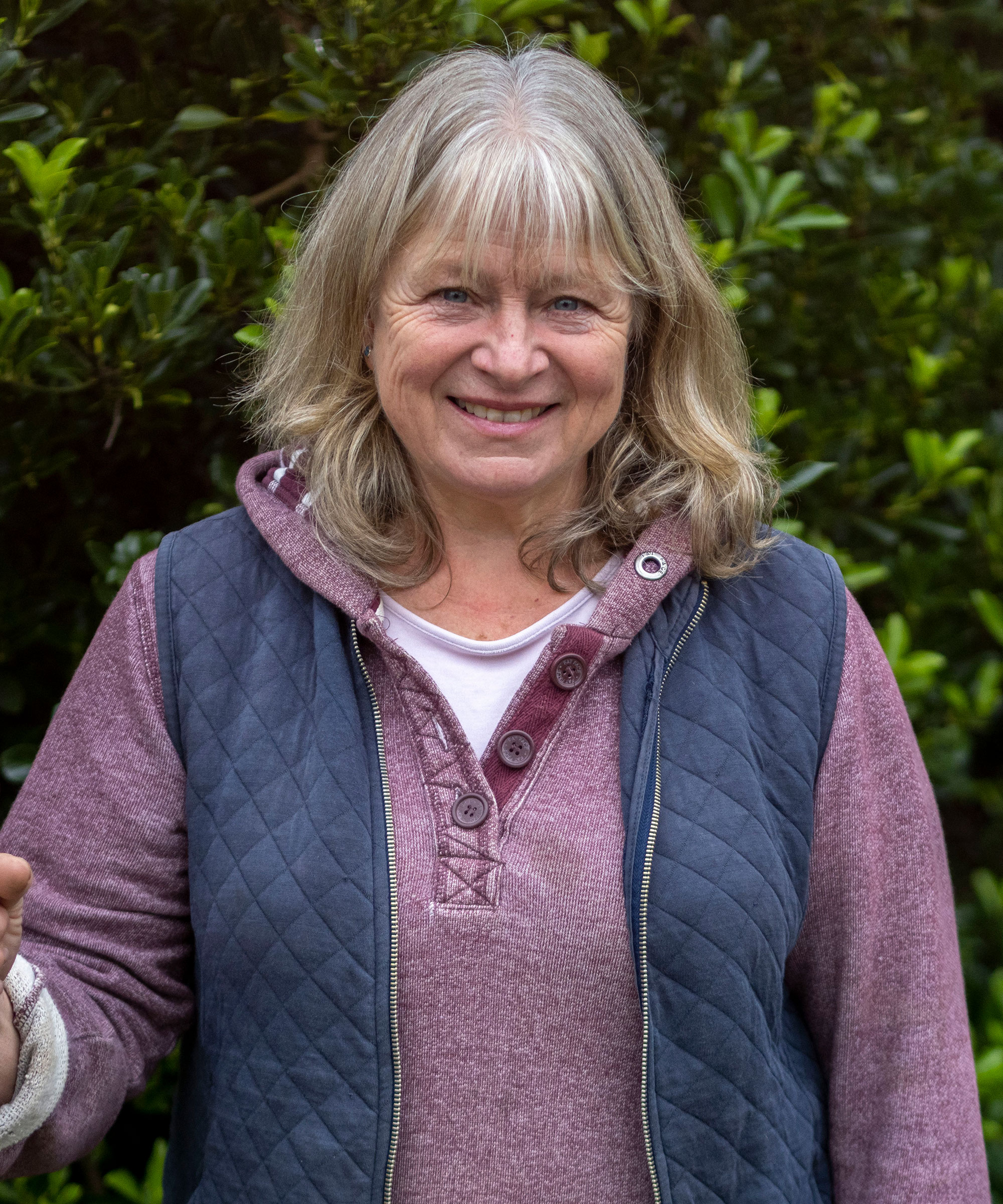
Having trained at Kew Gardens in London, worked in parks department nurseries and as Glasshouse Supervisor at RHS Wisley, Anne has been a freelance horticulturist since 1986. Anne writes for Amateur Gardening and has been a regular panelist on BBC Radio 4’s Gardeners’ Question Time for 27 years. A large plot full of wildlife habitats, edible and ornamental plants is Anne’s workshop and inspiration.
